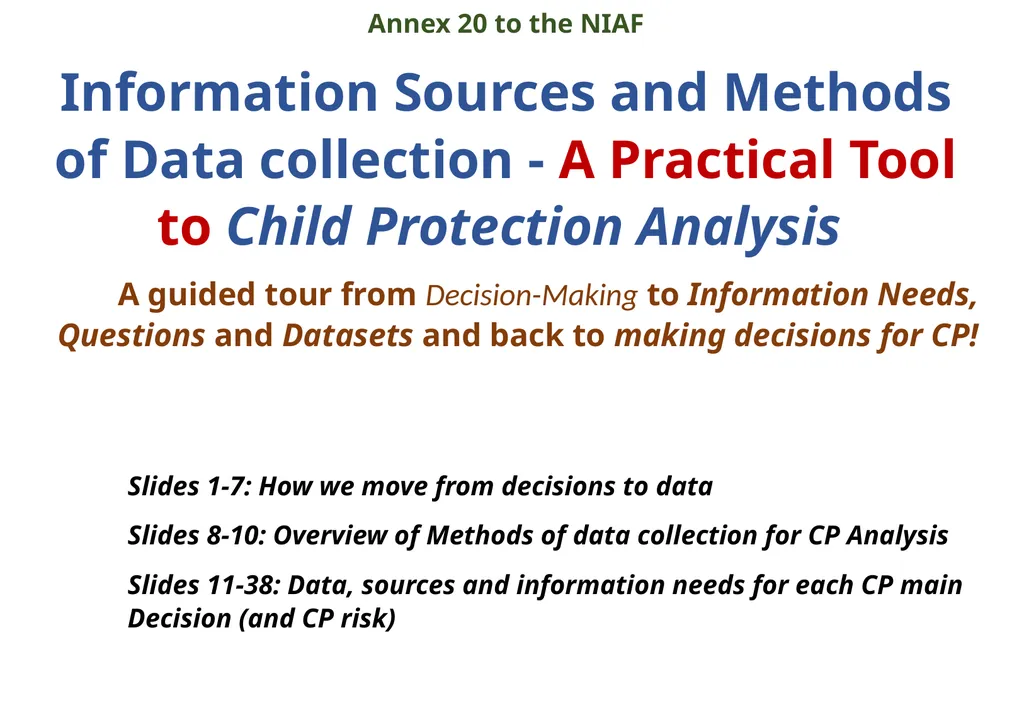
Annex 20 to the NIAF Information Sources and
Author: ellena-manuel | Published: 2025-06-27
Description: Annex 20 to the NIAF Information Sources and Methods of Data collection - A Practical Tool to Child Protection Analysis A guided tour from Decision-Making to Information Needs, Questions and Datasets and back to making decisions for CP!
Download Presentation
Download the PPT/PDF: Download
Transcript:
Loading transcript…